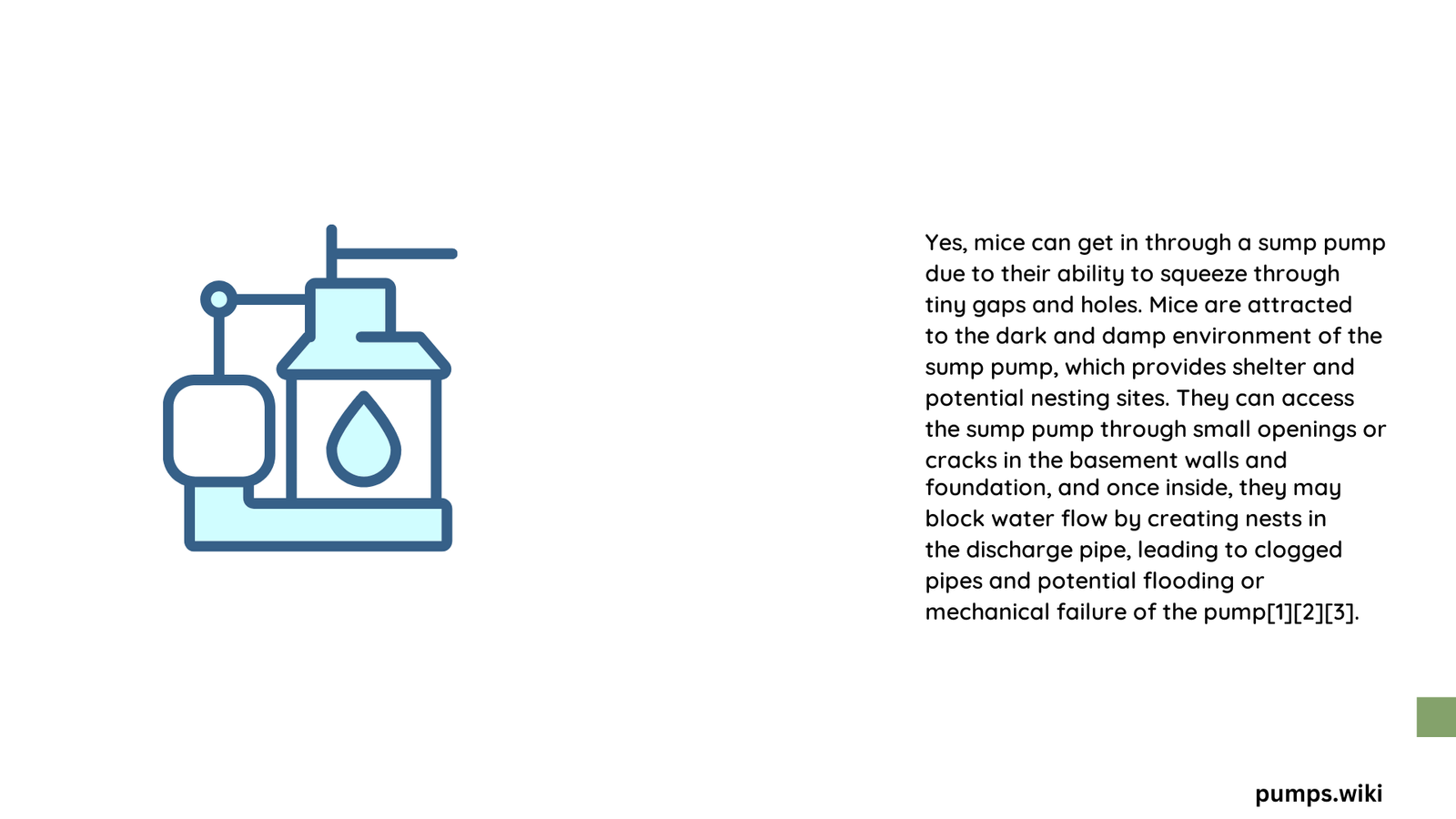Mice pose a significant threat to home integrity, and sump pumps can unexpectedly become their gateway into your living space. These tiny rodents can squeeze through incredibly small openings, with some baby mice capable of entering through gaps as narrow as 1/4 inch. Understanding how mice exploit sump pump systems is crucial for homeowners seeking to maintain a rodent-free environment and protect their property from potential damage and health risks.
What Makes Sump Pumps Attractive to Mice?
Mice are opportunistic creatures drawn to specific characteristics of sump pump systems:
Moisture and Shelter Factors
- Water Access: Sump pumps provide consistent moisture
- Temperature Regulation: Underground areas offer stable temperatures
- Hidden Pathways: Discharge pipes create natural entry routes
Typical Mouse Entry Points
| Entry Point | Risk Level | Size Vulnerability |
|---|---|---|
| Discharge Pipes | High | 1.5 inches diameter |
| Pipe Connections | Medium | 1/4 inch gaps |
| Screened Vents | Low-Medium | Mesh size dependent |
How Do Mice Navigate Sump Pump Systems?

Mice leverage several strategies to infiltrate homes through sump pump infrastructure:
- Pipe Exploration
- Squeeze through narrow discharge pipe openings
- Follow moisture trails
-
Detect temperature differentials
-
Screen Penetration
- Exploit improperly sized mesh screens
- Chew through weak barrier materials
- Create new entry points
Effective Prevention Techniques
Barrier Installation Strategies
- Use 1/4 inch mesh screens
- Install hardware cloth around pipe exits
- Apply silicone caulk for gap sealing
- Implement multi-layered screening techniques
Professional Recommendations
- Raise discharge pipe elevation
- Extend pipes away from ground-level access
- Conduct regular maintenance inspections
- Use specialized sump pump covers
What Materials Block Mouse Entry?
Recommended rodent-proofing materials include:
– Stainless steel mesh screens
– Hardware cloth (1/4 inch)
– Expandable foam with rodent-blocking properties
– Copper mesh for long-term durability
Maintenance Checklist for Sump Pump Protection
- Quarterly Inspection
- Check screen integrity
- Verify seal conditions
- Examine pipe connections
- Annual Professional Assessment
- Comprehensive system evaluation
- Advanced sealing techniques
- Potential infrastructure improvements
Cost Considerations
| Prevention Method | Estimated Cost | Effectiveness |
|---|---|---|
| DIY Mesh Screening | $20-$50 | Moderate |
| Professional Sealing | $100-$300 | High |
| Comprehensive Rodent Proofing | $300-$600 | Very High |
Warning Signs of Mouse Infiltration
- Unusual scratching sounds near sump pump
- Visible droppings around discharge area
- Gnaw marks on pipes or screens
- Unexplained moisture trails
Expert Tip
Professional pest control experts recommend a multi-layered approach combining physical barriers, regular maintenance, and strategic home modifications to effectively prevent mice from exploiting sump pump systems.
Conclusion
Protecting your home from mice requires proactive, comprehensive strategies focused on understanding and blocking potential entry points, with sump pumps representing a critical area of vulnerability.
